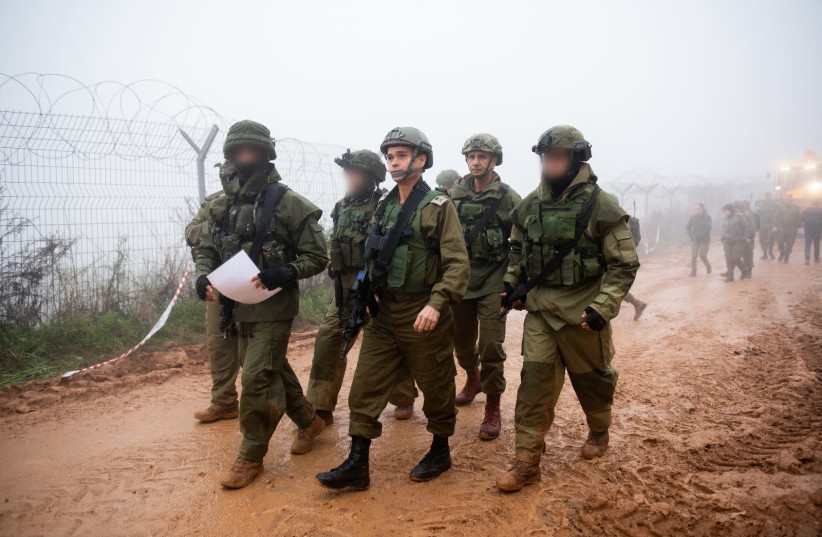The lack of funds has hampered the IDF’s ability to strengthen and repair security components in communities along its borders in the north and south, a new State Comptroller report has found.
About 900,000 residents live in 399 communities along the borders and in the West Bank. In the effort to protect these communities from the infiltration of terrorists and save lives, hundreds of millions of shekels have been invested in security components over the years.
From January 2020 to October 2021, the State Comptroller’s Office conducted an intermittent audit of the correction of the deficiencies that had been raised in the 2018 audit regarding the security components in communities along the country’s border.
The audit was conducted in the IDF’s Central Command, Northern Command, Southern Command, Ground Forces and Operations Directorate as well as with the police.
According to the report, NIS 110 million is needed to complete security components in communities in northern Israel and the Gaza envelope. While NIS 54 million was allocated to the Homefront Command in July 2018 to strengthen security components in 21 communities in the north, only NIS 34 million was received.

Between 2017 to 2021, the Homefront Command increased the budget for the repair and strengthening of defense components, but the budget was still less than half of the required budget (required approximately NIS 45 million).
Since the previous audit, two plans were formulated to close the gaps in security components.
In May 2018, the Homefront Command formulated a 5 year-plan aimed at meeting the needs in the field of civil defense throughout the country, which included addressing gaps in the security components throughout the country that would cost NIS 554 million.
In July 2018, the security cabinet announced the multi-year Northern Shield plan to protect the homefront. Several months later in October 2018, the Knesset Finance Committee approved a budget of NIS 136 million for the purpose of improving the security and civil defense in some 21 communities along the northern border.
At the time, former defense minister Avigdor Liberman said that since the last war in the north in 2006, the government has invested some NIS 1.7 billion ($485 million) in protective facilities in southern Israel around the Gaza Strip where some 46,000 residents live, spending an estimated NIS 37,000 ($10,600) per resident.
Meanwhile, in the north, which is home to about 244,000 Israelis, over the same period of time the government spent NIS 236 million ($68 million), or approximately NIS 970 ($280) per resident.
According to a 2020 State Comptroller report, millions of Israelis do not have basic protection means near their homes, and plans for population evacuation, should war break out, have yet to be completed.
The report stated that some public and shared private shelters in communities along the border are expected to be overcrowded during times of emergencies “that may not allow for prolonged stays.”
Though efforts were made to upgrade existing shelters, the lack of a state budget and political instability for over two years made it difficult to provide funding to the program that is estimated to cost some NIS 500 million per year for 10 years.
When the 2022 budget passed, the Northern Shield project received NIS 250 million.
The State Comptroller’s Office noted that the shortcoming regarding the need to prepare plans to reduce gaps in the security components has been corrected to a small extent through the formulation of the plans. But, only the plan concerning the northern communities was approved with NIS 54 million budgeted and in practice only partially budgeted to the amount of NIS 34 million.
In the Northern Command, according to the audit, the communication capabilities between local security teams in communities in the north with the IDF have “even worsened” since the previous audit. This is due to the fact that the main means of communication between the teams and the IDF are not military and could collapse during an emergency. The audit also found communication gaps in the Southern Command.
“These gaps may constitute a serious operational failure in the defense system of these communities,” the report said, adding that “a proper alternative that provides an immediate response in an emergency that may occur without prior warning” must be found.
The shortage of equipment for community protection teams has also been greatly reduced since the last audit, the report said. The IDF must therefore ensure that the weapons inventory conforms to the required standard.
The plan states that, in addition to the aforementioned investment, an investment of NIS 250 million is required in the years 2014 to 2020 to finance means of communication in communities along the borders and the West Bank.
The report stated that over the years, the gaps in the security components have only increased – due in part to new needs that have arisen.
It was therefore recommended by the audit that the IDF urgently formulate a plan to reduce the gaps.
